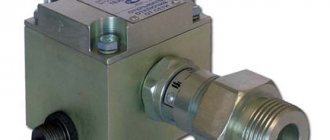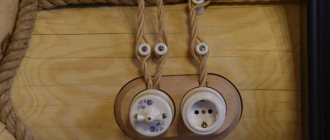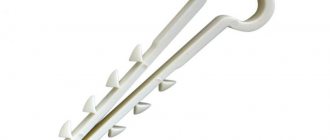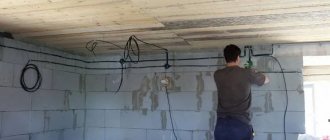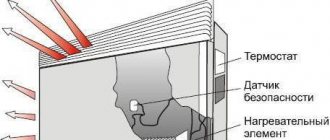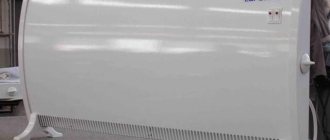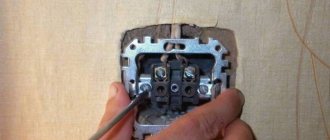Today, convector heaters are becoming quite a popular means of additional heating of rooms. These devices are silent, compact and efficient. Suitable for offices, houses and apartments.
In order to choose the best convection heater, you need to carefully study all the advantages and characteristics of the devices.
Structure and operating features of devices
Convector heaters have special operating principles. The device is based on the physical characteristics of the indoor climate. Its concentration depends on the air temperature. Low-temperature air is heavy and concentrates near the floors, while warmer air nears the ceiling.
Wall-mounted convector heaters have special-purpose upper and lower slots for air permeability. The lower openings absorb cold air, and the upper slots release already warmed and light air.
The heating elements are mounted directly into the device body. To increase the efficiency of the equipment, metal of at least 0.8 millimeters is used for housings.
Convector-type heaters are equipped with thermostats for independent regulation of air temperature.
Choosing the best electric convector
The principles that will help you choose a convection heater for an apartment, cottage or house remain unchanged. Our goal is to choose, not illusively, the best electric convector, but a reliable device that will provide us with good warmth and take up a lot of space, and even better fit into the interior and become a unique highlight.
Step one
Heating power is the main characteristic of a convector. Traditionally, calculations are based on the conditions that 100 W are required for heating per 1 m2. Are you probably scared by the prospect of spending 1000 watts per hour to heat a 10 m2 room? But we are going to buy an electric convector for additional heating! Therefore, we safely advise you to buy a device with lower performance. For additional heating of 18 m2, 1 kW of power is quite enough, and even then, most likely you will use half the power.
Modern devices are equipped with step-by-step heating control. This way, it will be easier for you to select the required power at home, even if you decide to buy an electric convector with a “reserve”
Step two
Probably the most pleasant in our review, and it is dedicated to design. Of course, there are not many options for creativity, but still. Electric convectors can be found in traditional white colors and other colors, even mirrored options. We also select design solutions according to needs; the standard convector has the same height, around 45 cm, but varies in length depending on the power. In addition, there are interesting offers of flat models and a space-saving plinth convector.
Step three
A really important point is to decide on the thermostat in our device. The manufacturer completes products ranging from inexpensive mechanical sensors to expensive electronic ones. Electronic thermostats are the most accurate. A mechanical thermostat, on the one hand, is cheaper, on the other hand, it has low accuracy and is more susceptible to wear. The electronic device responds to a change of 0.1 degrees, in addition, it has the ability to be programmed.
Here we leave the choice of convector control up to you, since in the future, you can always buy an additional socket with a thermostat and expand the capabilities of your inexpensive device. Let us only add the unconditional fact that an accurate thermostat will contribute to the greatest energy savings.
Positive and negative qualities of devices
Convectors, like any other equipment, have their pros and cons. Positive qualities include:
- Fast room heating
- Silent operation
- Duration of operation
- Safe Operation
- Affordable prices for convector heaters.
Negative qualities:
- Not suitable for heating large areas
- High electricity consumption. Although there are energy-saving convector heaters for home use.
Electric convector - calculation of kW consumption.
Agree, buying an electric convector is one thing, but how much we will have to pay for the heat received is quite another, that is the question. We emphasize that our calculation of consumption is based on personal operating experience, and not on manufacturers’ formulas. Let us also make it clear that we do not heat the house in the frosty winter, we raise the temperature in the room to a comfortable state. Let's consider an average room of 18 m2. The technical characteristics of any manufacturer for heating a room of such area regulate the purchase of a 1000 W convector.
Let us clarify that to start central heating, municipal authorities are guided by the Decree of the Government of the Russian Federation dated May 6, 2011 N 354, according to which the street temperature must drop below +8 ºС and not rise for 5 days. I think many will agree that usually, in the off-season, it can take a month to achieve this goal, and the temperature outside the window is + 12°C, already reducing the temperature in city apartments to + 16 – 17°C.
Consumption calculation
We plug in the electric convector and set it to a comfortable 22 °C. We will not go into calculations; everything has been tested many times experimentally. With the door closed and the window closed, in full power mode at +17 °C. up to +22 °C. , a 1000 W convector runs for about 25 minutes. You can always double-check this and write your result in the comments.
When the set value is reached, the temperature control system will work and the consumption of electrical energy will stop. As it cools down, noticeably after 20 minutes the temperature sensor is triggered and turns the convector back on. Considering that the next switching on does not require heating from 17 °C, but starts from 20 °C, then the time to reach the value is 22 °C. much less, no more than 10 minutes. Then the on/off cycle is repeated and the average heater operation does not exceed 20 minutes per hour.
Actually, based on the experimentally obtained data, we obtain the consumption of an electric convector. Divide 1000 W by 60 minutes and get 16 W - we determined the electricity consumption of one minute of operation. In our experiment, the convector worked for no more than 20 minutes. Now we multiply 16 W by 20 minutes and get the power that the convector consumed per hour of operation - 330 W. Thus, the convector “eats” 1 kW in three hours. The cost of one kilowatt at the beginning of 2022 is 4 rubles.
Gentlemen, per evening we will need no more than 9 hours of operation of an electric convector - 12 rubles. A month in the off-season will cost about 360 rubles. To be on the safe side, let’s add another 30% to this amount (for those who sit too long in front of the TV). The total cost of operating the convector will be 400 – 500 rubles for normal temperature conditions for a month. Let me ask you a question: is it worth saving this amount, exposing your body and your household to the risk of cooling? Sick leave and a bad mood are much more expensive; drops for a runny nose alone can offset this kind of savings.
Type of equipment
Many people have a question, what kind of heater to buy? In order to understand this, let's look at the types of devices.
Manufacturers offer the following types of heaters:
Convective infrared heater. Maintains a comfortable temperature and does not dry out the indoor air.
Film wall equipment. This is an electrical insulating film with a heating element. Effective to use, but with a short service life.
Gas heater. Can be used for rooms with a large area. Simple, safe, environmentally friendly and easy to use. For operation, a chimney or hood and a gas source are required.
Water convectors. There are floor-mounted and wall-mounted units. They are safe, convenient and durable to use.
To select the right heater, it is necessary to determine the scope of application of the device for effective operation. Consumer reviews about convector heaters will help you with this.
Installation of heaters
To mount an electric heater to a wall, perform the following steps:
- Remove the device from packaging
- Turn the heater with its back side and remove the fastenings
- The holder must be leaned against the wall and the location for mounting the device must be marked.
- Using additional tools, install the bracket
- Attach the convector to the bracket
- After installation, you can turn on the heater and set the optimal air temperature.

